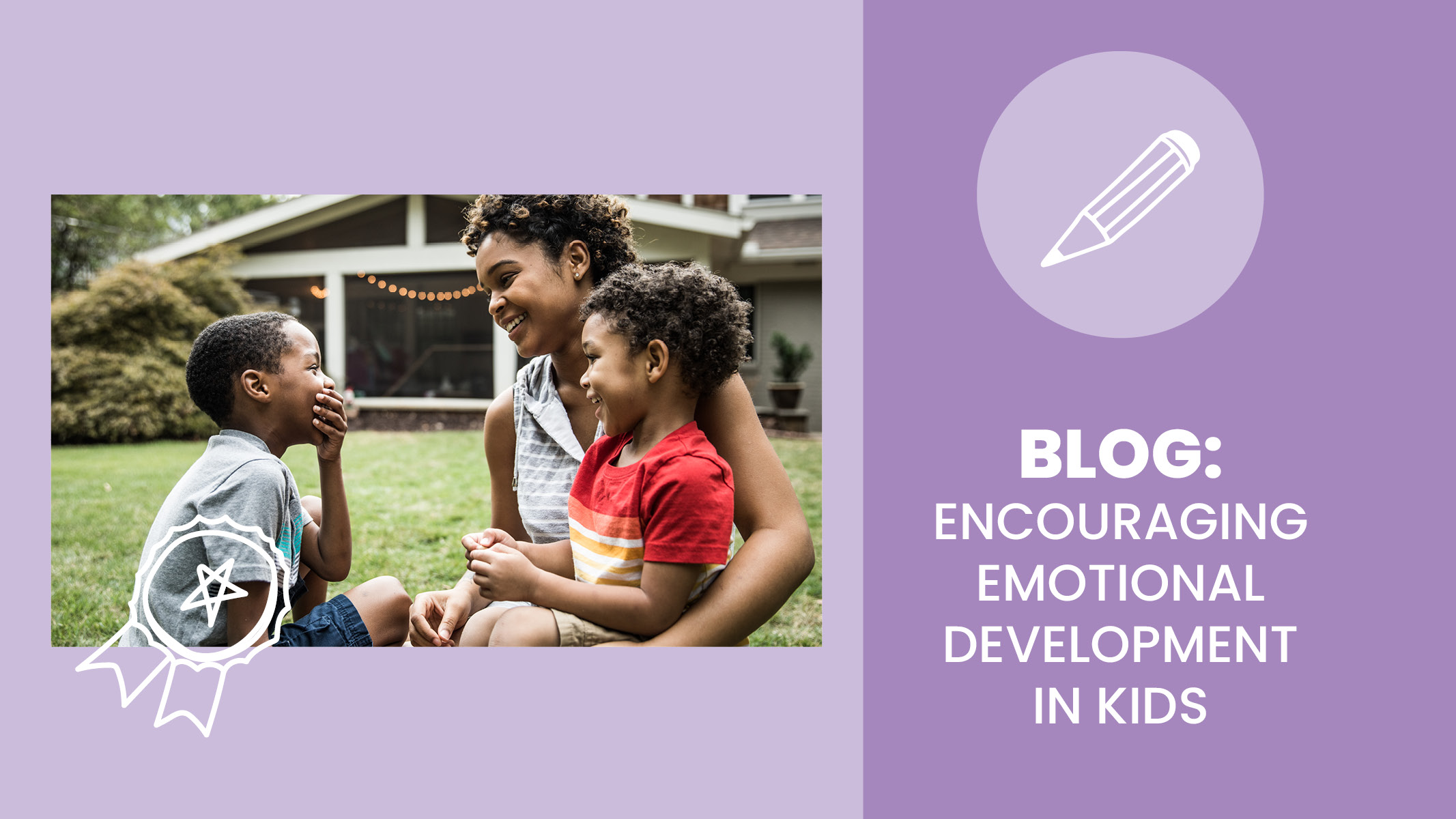Life is stressful, no matter your age, and children don’t have as much experience in dealing with unpleasant emotions as adults do. We might not always have the ability to eliminate the challenges that occur, but we can teach kids how to understand and self-regulate the emotions they experience. We sat down with Dr. Emily Griese from Sanford Health in Sioux Falls, SD, to learn more about ways adults can encourage healthy emotional development in the kids they see every day.
Consider Others’ Points of View. When you start promoting positive emotional health in youth, Griese says, “Any activity that promotes perspective taking can be important.” This can be embedded into many different games, such as Simon Says, Tag, or Follow the Leader.
Children often absorb the information that comes through perspective-taking earlier than we may expect. At age six, kids have the ability to see that other people have different perspectives than they might. Kids usually develop a sense of empathy around ages ten or eleven.
Prompting perspective-taking in children early on gives them the ability to take a step back when emotions run high. Rather than reacting in unhelpful ways (i.e. eating unhealthy foods, acting out, etc.), being able to consider another’s perspective can help them understand their role in different situations and understand how to better overcome challenges they may face.
Communication is key. While misbehavior, meltdowns, or temper tantrums are technically a form of communication for kids who can’t communicate the feelings they’re experiencing, unexpected outbursts can sometimes be overwhelming and difficult for adults to navigate.
Use these challenges as a learning opportunity for both the adult and the child. After the incident occurs, Griese recommends giving the child an opportunity to calm down and then circling back to discuss, in age-appropriate language:
- How the child reacted
- What emotions the child felt
- How the child could respond in the future
For instance, if a child is upset, the adult could say something like, “I understand why you are upset, that was hard. Maybe next time, instead of throwing things, we spend some time by ourselves, talk to someone else, or count to 10.” By doing this, the child’s feelings and emotions are validated, but they also learn new techniques they can use to manage their mood and calm down.
“For some kids, it’s easier to give them time to themselves first. After they are emotionally calmed down, some kids can overcome their emotions quicker.” Be sure to tailor how and when you talk through the situation to the child, depending on their temperament. There is no set time on when to do this, just as long as the child has calmed down, can think clearly, and the incident is recent in their memory.
Combining lessons that teach both perspective and communication is an important first step towards emotional development and managing your mood.
Find the balance. Extracurricular activities provide countless benefits to children, including:
- Exposure to diversity
- New learning opportunities
- Chances to build new and existing skills
However, it’s important to remember, quality over quantity. As caregivers and educators, you want to provide children with as many opportunities as you can, yet when children are rushing from one thing to the other, they can become easily overwhelmed.
Even of her own kids, Griese says, “I can see when they come home from being in daycare all day that they need time away from their peer group, a safe place to have me-time, family-time, or just a less busy environment. Shuttling kids from one chaotic environment to the next can lead to an emotional breakdown, especially when they are younger. We know the importance of these activities but it’s figuring out a balance, and it’s truly different for each kid.”
If you’re seeing signs of fatigue in your child, use it as a teachable moment to explain that it’s okay to pause and take breaks when needed. This could mean skipping a practice, not meeting friends one night, or even cutting out an activity completely. Griese suggests, especially for younger children, “Set aside time in the evenings and weekends as designated family time.” Remember, one child’s balance may be vastly different from another’s, and that’s just fine! Discovering your unique balance is key in emotional health.
Make sure to follow through. Kids (and adults) experience many different feelings and emotions every day, and the resulting mood might not always be a great one. As caregivers and educators, it’s vital to set a precedent on how you handle fluctuating moods and behaviors. There is no black and white answer, and it can look different for every situation, but what is important is that you follow through and stay consistent. Say what you mean and mean what you say. Talk to the child about coping strategies they can use to help understand their feelings and emotions.
When tantrums happen, remind them of the strategies they’ve learned to self-soothe. Do your best to be a positive role model and practice these techniques yourself. “It’s an emotional reaction, we all have that,” Griese admits, “Even adults don’t have this mastered, but as adults, our job is to talk with kids about the process of managing moods.”
Ready for More? You Might Also Like:
Wellness Posters
Positive Self-Talk Coloring Pages
Mindful Moments Cards


